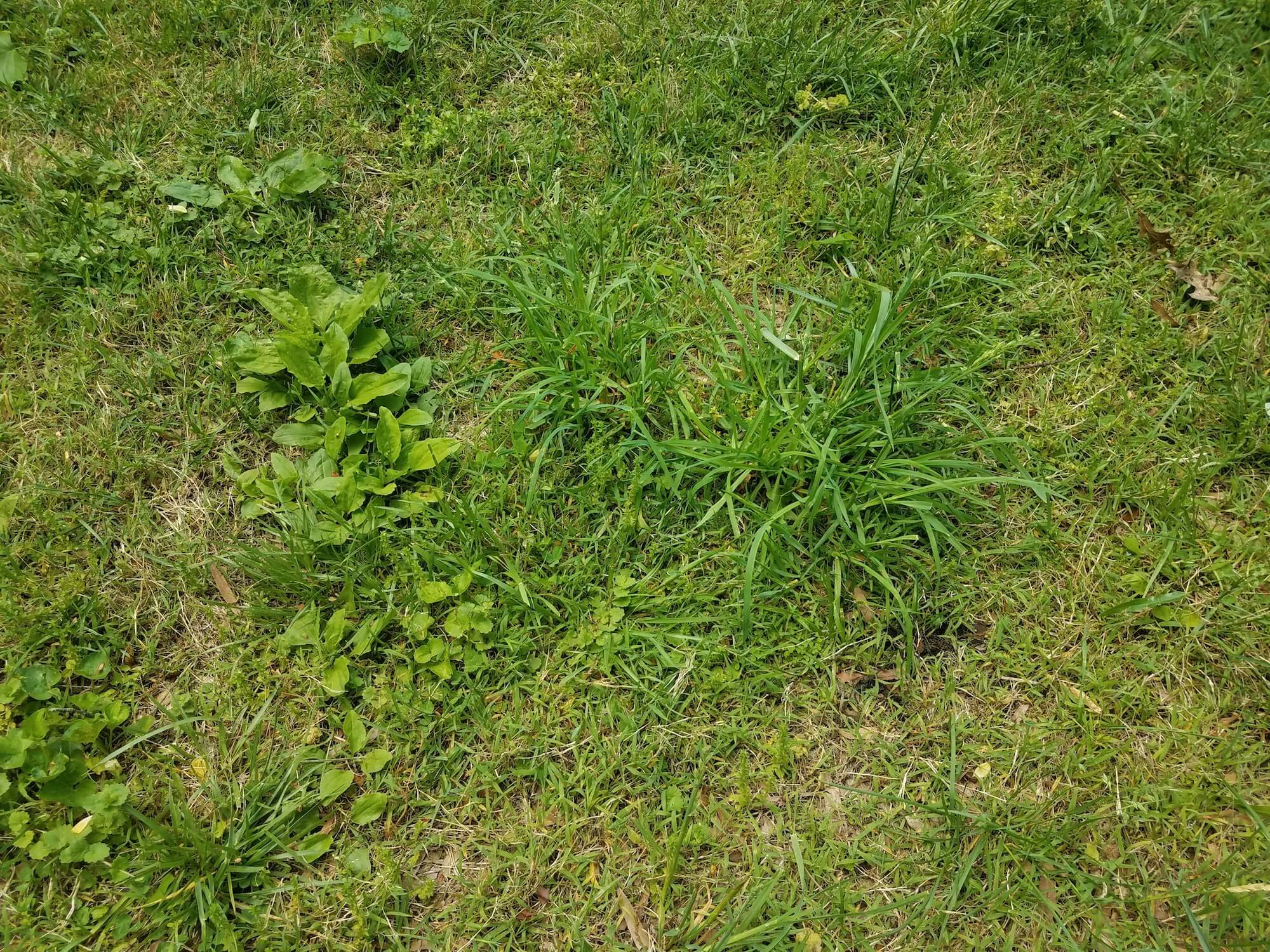How to Restore a Lawn Full of Weeds
Weeds have earned their poor reputation for a reason. Even when you’re convinced you’ve discouraged every dandelion and crabgrass seed from taking root, fields of weeds can spring up the moment spring weather rolls around.
Restoring a lawn full of weeds to its clean, even, and grass-only glory requires a little understanding of each type of weed itself. While every plant is unique, there are some clear ways to stop the rapid germination process and get rid of the main culprits in time.
We’ll walk you through the process of identifying your weeds, how they reproduce, and the safest way to either manually remove them, safely use an herbicide, and when to contact a professional.

Are Weeds Bad for Your Lawn?
There’s no question that the most obvious downside of weeds in your lawn is their unruly appearance. Weeds grow in all different shapes and sizes compared to your rather uniform turf grass, making it nearly impossible to get that crisp, clean look we all desire for our home landscapes.
However, there are some additional perks and disadvantages to keeping weeds in your yard.
Benefits of Weeds
In spite of their ugly appearance, many wonder whether weeds are bad for your lawn and its health? In some respect, a small population of weeds likely aid in several common lawn issues.
Dandelions and clovers, for example, attract helpful insects like butterflies, bees, and ladybugs. Some predatory insects will also enjoy a good meal on some common weeds, keeping biting pests like mosquitoes and ticks from infiltrating your home.
The larger weed roots can also assist with slowing erosion, especially if you live in a drought-prone region. Each of these only pertains to a small number of weeds, however, which can be difficult to balance.
Dangers of Too Many Weeds
The tricky part is that weeds grow at a rapid pace, even if we try to pull up the extras as they grow. A large population of weeds can battle for nutrients, water, and sunlight from your grass, cutting off their lifeline and leading to brown spots across your property.
The weaker your grass roots, the more likely they will become susceptible to erosion, drought, and fungus. So while a few weeds can help these struggles, reaching a delicate tipping point negates their benefits.
Identifying Your Yard’s Weeds
Common weeds in lawns across the US typically fall into one of three categories:
- Broad-leaf
- Grass-like
- Grassy
Knowing which variety—or varieties—you’re dealing with can help you select the right removal tactic for that plant. Let’s go through each category and some of the most common examples so you can get ahead of the game.
You should also note that some poisonous weeds—such as poison sumac, poison ivy, and poison oak—are also common in yards and can spread quickly. Take extra care or contact a professional if you detect these on your property.
Broadleaf Weeds
Broadleaf weeds are typically the easiest varieties to pick out. Their large, thick leaves, wide stems, and often beautiful flowers help them stand out in a smooth green lawn of short grass.
Many broadleaf weeds will first appear in their seedling form as two wide leaves from the ground before spouting a stem with large buds or flowers. There are both annual and perennial broadleaf weeds, meaning that it can be tricky to get rid of some even if they go dormant in the winter.
Common Types of Broadleaf Weeds
While the list of broadleaf weeds in the US is incredibly extensive, you are more likely to find a handful of common bad actors in your lawn. These include:
- Dandelions
- Ground Ivy
- Clover
- Bull thistle
- Chicory
- Common ragweed
Grass-Like Weeds
This variety of weeds can be some of the hardest to control since they look a lot like your local grass in the early stages. However, grass-like weeds will often have tube-like grasses jutting from the ground, appearing much thicker than your turf grass.
Many grass-like weeds will eventually grow tall above the ground and sprout seeds that easily spread with the wind. Others will form thick roots deep into the earth, interfering with your regular grass’s growing area, such as wild garlic.
Common Types of Grass-Like Weeds
- Wild onion
- Wild garlic
- Nutsedge
- Smallflower Umbrella Sedge
Grassy Weeds
Perhaps most confusing is the category of weeds that remain similar to the rest of your grass through their lifetime. Grassy weeds will look very similar to turf grass, but depending on their species, will eventually identify themselves through their growth direction, thickness, flowers, or seed phase.
Grass weeds grow one blade at a time, slowly infiltrating your turf grass before standing out in your yard apart from the lawn around it.
Common Types of Grassy Weeds
- Crabgrass
- Quackgrass
- Ryegrass
- Green Foxtail
How do Weeds Spread?
Like all plants, each weed is either considered an annual, biannual, or perennial plant. Their category will dictate how often they will spread seeds on their own.
Weeds send their seeds around your yard and into other yards through the wind and water or on by hitching a ride on animals and humans. Dandelions are the most obvious weed travelers, especially since even a light tap can send the umbrella seeds floating into your neighbor’s lawn.
It’s also important to note that some weeds, especially grassy weeds, can live dormant in the soil for some time. So even those most persistent homeowners can end up with unexpected weeds after a thorough prevention regimen.
The Best Conditions for Weed Growth
Some lawns are also more prone to weeds, particularly if they battle with:
- Drought
- Compacted soil
- Thin grass from lack of seeding, pests, or disease
Not surprisingly, this is why balancing a proper lawn care regimen is key to keeping weeds from infiltrating your lawn throughout the year.
How to Remove Weeds: Step-by-Step
Most importantly, how do you attain that even, grass-only lawn that becomes the envy of the neighborhood? If the prevention phase is long behind you, here are the three most common tactics for getting rid of weeds for good.
Manual Removal
Removing weeds by hand is not the best way to get rid of a lawn filled to the brim with weeds, but it is a great starting point if you only have a few plants here and there.
1. Moisten the Soil
You will likely have an easier time removing the full weed root from moist soil. Lightly water the area around your weeds and wait for the water to seed down to the root layer before digging or pulling them up with the method below.
2. Dig up the Roots
Use a sharp spade or trowel to dig to the bottom of the plant, making sure to reach the bottom of the roots. Be careful not to rip the roots too early, as you may leave some of the plant left in the ground to regrow.
If the weed is new, you may be able to pull it up gently from the base of the stem and bring the roots with it. In this case, firmly grip the bottom of the plant, twist lightly, and pull the roots up as intact as possible.
Apply a Herbicide
Herbicides, whether chemically based or natural, come in two categories: pre-emergent or post-emergent. Pre-emergent herbicides attack the roots before they come up, typically in the spring or fall, while post-emergent additionally gets rid of the whole plant above the ground as well as its roots.
Natural vs. Chemical Herbicide
Natural alternatives are always safer than chemical herbicides, both for your health and the health of the planet. Chemical herbicides can seep into the ground, spread to other plants, and alter your lawn’s natural habitat of necessary insects.
Natural herbicides can either be purchased or made on your own, depending on the severity and type of weed you’re dealing with. DIY herbicides include boiling water, vinegar, or salt, all of which break down the integrity of your weed’s roots.
If you purchase herbicides online or at the hardware store, check if it specifically applies to broadleaf, grass-like, or grassy weeds.
Targeting Weeds
Read the instructions carefully on your form of herbicide, as some will kill everything in its path when applied to the weeds. Pre-emergent weed killer is safe on most grasses, but may require overseeding to return it to its original fullness.
Pay extra attention to the timing of your herbicide’s instruction. Check the label for instructions on the proper moisture in the soil, seasonal timing, and plants to avoid to protect it from damage.
Reinvigorating Your Lawn
Once the weed killer does its job, it’s important to take extra care of the grass you do want to flourish in your lawn. The stronger the roots and denser your grass, the less likely weeds will have the freedom to take up space.
1. Remove Dead Weeds
Break out the rake and space and dig up any dead weeds that were killed by your herbicide. As we noted in the manual method, be sure to get to the bottom of the roots when removing each plant.
2. Prep for New Seeds
Overseeding is a crucial step for a lawn that requires extensive weed control. Prepare your soil once the weeds have died out and you’re able to remove their roots.
This may include dethatching and aerating your lawn, depending on how extensive your reseeding process. For example, a dethatching rake cuts into the thin layer of roots and organic material between the grass blades and the soil, allowing the seeds and water greater access to the roots.
Aerating takes the process a step further, removing small plugs of soil and grass for direct root to the heart of the soil.
3. Laying New Seed
Before overseeding your lawn, be sure you choose the correct variety for your lawn. If you’re not sure which combination of grass you currently have, speak with a TruGreen professional for guidance.
Use a seed spreader to evenly distribute the grass seeds over a thin layer of new top soil. Lightly rake the seeds into the soil to incorporate and cover with another thin layer of soil about a quarter of an inch.
4. Water and Fertilize
Distribute a layer of fertilizer designed specifically for new lawns and follow the watering schedule on the instructions. It’s important to avoid overwatering your lawn—twice a week during the season should do.
5. Maintain Your Grass
As we mentioned earlier, the denser the grass, the less likely weeds will have the room or available nutrients to flourish. Keep a strict lawn care schedule during each season to discourage weeds from sticking around. For example:
- Mow high in the warm season to ensure your grass roots can grow strong and grass blades thick.
- Aerate and detached once every 1-2 years to keep your soil strong.
- Fertilize at the start of the season to kickstart growth.
- Stay on top of pulling weeds when they do emerge to keep them from spreading and choking out the other grass.
Professional Weed Care
Every batch of weeds is different from the next, and it can take a few tries to find the right system that works for you. We recommend cutting out the guesswork and calling a local TruGreen expert for personalized care and advice.
TruGreen offers both pre-emergent and post-emergent weed control, tackling the specific weeds in your region with organic and safe treatments that work. Most importantly, you’ll have the option to choose from a range of plans customized to your budget, lawn size, and frequency of visits.
TruGreen specialists can both identify your current weeds and suggest a year-round plan for keeping them gone in the long run.







